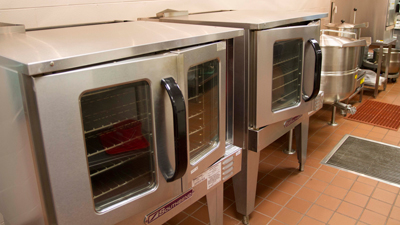The School Food Modernization Act
Note: Please see our fact sheet on the School Food Modernization Act for the most current information. This page refers to the version of the bill considered in the 113th Congress.
 American children spend more time in school than anywhere outside of their homes, and many of the choices they make there will influence their health over a lifetime. During the past three decades, childhood obesity rates in the United States have tripled. Today, more than 23 million adolescents and children—nearly one in three young people nationwide—are either obese or overweight, placing them at increased risk for serious, lifelong diseases such as diabetes, heart disease, cancer, and stroke.
American children spend more time in school than anywhere outside of their homes, and many of the choices they make there will influence their health over a lifetime. During the past three decades, childhood obesity rates in the United States have tripled. Today, more than 23 million adolescents and children—nearly one in three young people nationwide—are either obese or overweight, placing them at increased risk for serious, lifelong diseases such as diabetes, heart disease, cancer, and stroke.
The U.S. Department of Agriculture, or USDA, recently updated nutrition standards for school meals to align them with the most up-to-date science. As a result, schools are serving more fruits, vegetables, whole grains, and low-fat or no-fat dairy options while offering fewer high-fat options and excess calories.
Although the new policies are moving schools in the right direction, many school kitchens were built decades ago and designed with little capacity beyond reheating and holding food for dining service. Many of these facilities lack the basic tools necessary to prepare wholesome food for students. To fully comply with the new standards and efficiently prepare and serve food that is both healthy and appealing, school and food service administrators will need to replace outdated equipment and train cafeteria staff on the proper preparation of safe, nutritious, and delicious meals.
To address this vital challenge, U.S. Representatives Tom Latham (R-IA) and Mike McIntyre (D-NC) introduced bipartisan legislation, H.R. 1783, the School Food Modernization Act, or SFMA, which will:
-
Establish a loan assistance program within USDA to help schools acquire new equipment to prepare and serve healthier, more nutritious meals to students. School administrators and other eligible borrowers can obtain federal guarantees for 90 percent of the loan value needed to construct, remodel, or expand their kitchens, dining, or food storage infrastructure.
-
Provide targeted grant assistance to give school administrators and food service directors the catalyst funding they need for smaller projects to upgrade kitchen infrastructure or to purchase high-quality, durable kitchen equipment such as commercial ovens, steamers, and stoves.
-
Strengthen training and provide technical assistance to aid school food service personnel in meeting the updated nutrition guidelines. Not every school food service employee is equipped with the expertise to comply with healthier meal and food preparation standards. The proposed legislation authorizes USDA to provide support on a competitive basis to highly qualified third-party trainers to develop and administer training and technical assistance.
INVESTING IN SCHOOL KITCHENS CAN MAKE A BIG DIFFERENCE

Two recent examples illustrate the strong arguments for targeted investments in new kitchen equipment.
MISSISSIPPI
Already a national leader in school nutrition standards, in 2009 Mississippi schools engaged in a statewide obesity prevention campaign and received $1.7 million in federal funds to purchase kitchen equipment. Under the leadership of then-Governor Haley Barbour and the Governor's Task Force on Childhood Obesity, the Healthy Kids, Healthy Mississippi initiative identified a wide range of policy options to help state leaders improve child health and to reduce obesity in Mississippi, ranking school kitchen equipment upgrades among the top three priorities for action.
Replacing deep-fat fryers with combination oven steamers has enabled schools to serve baked chicken tenders and whole-grain rolls as an alternative to fried chicken and other higher-fat foods. Such changes have resulted in a significant reduction in the calories and saturated fat in school meals, and the healthier baked products received an overwhelmingly positive response from students and staff. These changes may be paying off. Recent data suggests that rates of childhood obesity in Mississippi have started to decline.
MADISON, WI
The Whole Kids Foundation, a charitable arm of grocery store chain Whole Foods Market, recently donated 15 salad bars to Madison, WI-area elementary schools, a small investment that school administrators highly value. Steve Youngbauer, director of food services for the Madison Metropolitan School District, said, “Offering a salad bar option for students may be the most impactful change that school districts can make within a child nutrition program.” The schools appreciate the healthier choices, but adding salad bars is not without cost to the district.
According to news reports, most Madison schools lack adequate kitchen infrastructure to fully support the fresh-prep salad bars. They may not have the appropriate refrigeration for fresh vegetables or regulation sinks to wash tongs and trays. Targeted, competitive federal grant funding is still needed to fully modernize kitchens and cafeterias to help school districts meet USDA's updated nutritional standards for school meals and to ultimately help schools and parents improve kids' health.
The Pew Charitable Trusts is driven by the power of knowledge to solve today's most challenging problems. Pew applies a rigorous, analytical approach to improve public policy, inform the public and stimulate civic life. Learn more at www.pewhealth.org.







